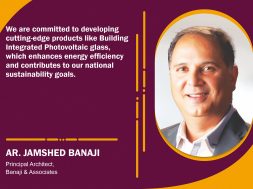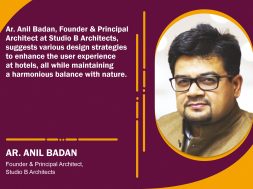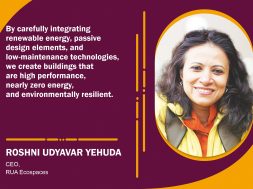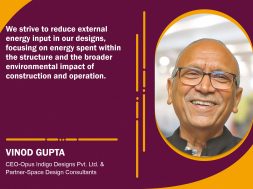Green building designs prioritise energy efficiency

Niti Garg, Head of the Interior Department at CPKA, speaks about different types of architectural designs and the demand for sustainable and smart buildings.
What designs are primarily in demand today, especially considering the need for smart buildings and sustainable construction?
In recent years, there has been a growing demand for smart buildings and sustainable construction; as a result, certain types of designs have become more popular, such as passive design, which focuses on designing buildings to be energy-efficient by minimising the need for mechanical heating and cooling. It optimises natural ventilation and incorporates materials with high thermal mass.
Biophilic designs improve the well-being of building occupants by incorporating plants, natural light, and views of the outdoors. Modular design involves constructing buildings using prefabricated modules manufactured off-site and assembled on-site. This approach can reduce construction waste and improve efficiency. Smart building design involves incorporating technology into buildings to optimise energy efficiency, improve occupant comfort, and increase building security with smart lighting systems, automated HVAC controls, and building automation systems.
Overall, the demand for sustainable and smart buildings has increased the emphasis on designs prioritising energy efficiency, occupant comfort, and environmental responsibility.
What are the smart practices for maintaining energy-efficient and cost-effective building designs?
Maintaining energy-efficient and cost-effective building designs involves implementing smart practices throughout the building’s lifecycle, from design to construction to ongoing maintenance, to optimise energy efficiency and reduce costs over the long term.
Using energy-efficient building materials, such as high-performance insulation, low-E windows, and energy-efficient HVAC systems, can significantly reduce the building’s energy consumption. Incorporating renewable energy systems, such as solar panels or wind turbines, can help reduce the building’s reliance on fossil fuels and lower energy costs.
What are your views on going beyond contemporary designs in mainstream architecture with green designs?
Green designs prioritising sustainability and environmental responsibility can have numerous architectural benefits.
Green building designs prioritise energy efficiency and sustainable materials, which can significantly reduce the environmental impact of buildings and improve indoor air quality and natural light. Biophilic design elements improve occupant health and well-being. It also lowers operating costs due to its energy efficiency and reduced reliance on non-renewable resources.
What are the challenges in offering sustainable and durable aesthetics within the client’s budget?
Offering sustainable and durable aesthetics within a client’s budget can be challenging; however, it is possible with careful planning and creative problem-solving.
To overcome these challenges, architects and designers must collaborate, working closely with the client, contractors, and other stakeholders to identify the most cost-effective solutions that meet the client’s budget and sustainability goals. It is possible to create sustainable and durable aesthetics within a client’s budget by prioritising key design elements and making careful material choices.

How are innovations in façade design complementing a high-rise’s design aesthetics and building architecture?
Innovations in façade design are having a significant impact on the aesthetics and overall architecture of high-rise buildings. Façades are the public face of a building, and they play a crucial role in defining its character, identity, and functionality.
Innovations in façade design are helping architects and designers create high-rise buildings that are visually striking but also functional, sustainable, and safe. By incorporating innovative façade design elements, architects and designers can create buildings that reflect their unique architectural vision while meeting the applicable requirements and sustainability goals of the building’s occupants and the wider community.
How are advanced technologies like 3D, BIM, and others helping architects and builders maintain ecologically sufficient buildings?
Advanced technologies like 3D modelling and BIM (Building Information Modeling) are helping architects and builders maintain ecologically sufficient buildings by providing them with cutting-edge tools and data-driven insights to make better design and construction decisions that support sustainability, reduce environmental impact, and enhance the long-term viability of buildings.
It is used to simulate the energy and resource performance of buildings. This allows architects and builders to optimise the building design, orientation, and layout to reduce energy consumption, minimise waste, and enhance efficiency.
for more info visit : https://www.cpkukreja.com/
41
Cookie Consent
We use cookies to personalize your experience. By continuing to visit this website you agree to our Terms & Conditions, Privacy Policy and Cookie Policy.










